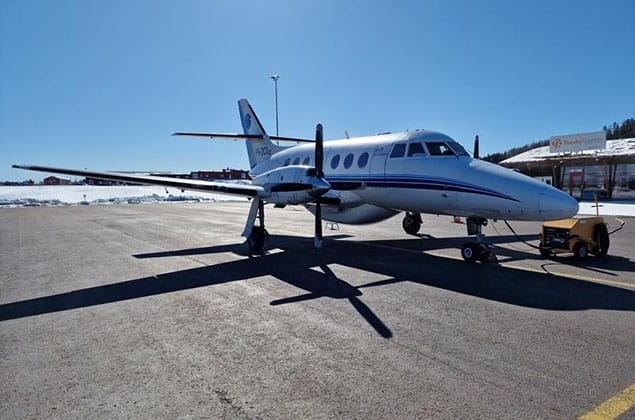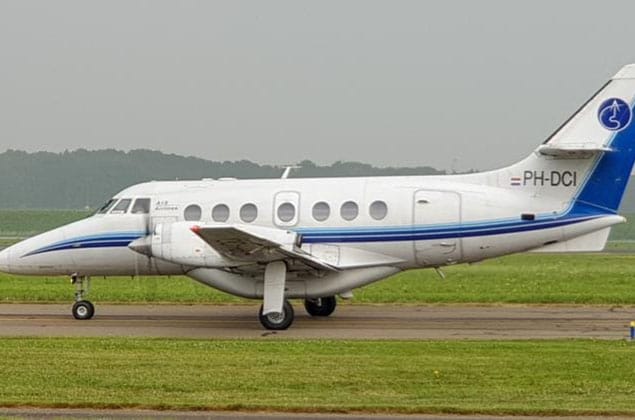Jetstream 32 Specifications & Booking
Overview of the Jetstream 32
The Jetstream 32 is a British-built twin-turboprop airliner, manufactured by British Aerospace (now BAE Systems). It is primarily used for commercial purposes, with a focus on regional and domestic flights. The Jetstream 32 first took to the skies in August 1984, marking a significant milestone in its development.
Technical Specifications
The following technical specifications provide a detailed overview of the Jetstream 32:
- Dimensions: Length: 23.62m (77 ft 6 in), Wingspan: 20.72m (68 ft 1 in), Height: 7.55m (24 ft 9 in)
- Weigh: Empty weight: 10,400 kg (22,975 lb), Maximum takeoff weight: 17,700 kg (39,000 lb)
- Engines: Type: Allison AE-2100D turboprop, Thrust: 2 x 1,100 kW (1,475 shp), Fuel efficiency: 0.35 lb/(hp-hr)
- Performance: Maximum speed: 530 km/h (330 mph), Range: 3,460 km (2,150 miles), Cruising altitude: 8,500 ft (2,600 m)
- Capacity: Passengers: 30-40, Cargo: 1,200 kg (2,646 lb), Crew: 2
Design and Features
The Jetstream 32 boasts a unique design featuring a distinctive "T-tail" configuration, which provides improved stability and reduced noise levels. Its fuselage is made of lightweight aluminum, while the wings are constructed from composite materials. The aircraft's advanced avionics system includes a head-up display (HUD) and a terrain-following radar system.
History and Development
The development of the Jetstream 32 began in the early 1970s, with the first flight taking place on August 27, 1984. The aircraft gained certification from the UK Civil Aviation Authority (CAA) in November 1985. Key milestones include:
- First flight: August 27, 1984
- Certification: November 1985
- Entry into service: 1986
The Jetstream 32 faced several challenges during its development, including issues with the Allison AE-2100D engine. However, these were overcome through collaborative efforts between British Aerospace and the engine manufacturer.
Operational Use
The Jetstream 32 has been used by various airlines and organizations for a range of purposes:
- Airlines: Loganair, Airwork, and others operate the Jetstream 32 for regional and domestic flights.
- Military: The aircraft has seen service with military forces in Europe, Asia, and Africa.
- Specialized missions: The Jetstream 32 has been used for cargo transport, medical evacuation, and search and rescue operations.
Interesting Facts
Here are a few interesting facts about the Jetstream 32:
- The aircraft's T-tail design reduces noise levels by up to 50% compared to conventional tail configurations.
- In 1986, a Jetstream 32 set a world record for the longest non-stop flight in a turboprop aircraft, flying from London to Singapore (7,300 km or 4,530 miles).
- The Jetstream 32 has made appearances in various films and TV shows, including the popular British sitcom "Only Fools and Horses."
Frequently Asked Questions
What makes the Jetstream 32 unique?
The Jetstream 32's T-tail design, advanced avionics system, and composite materials make it a unique aircraft in its class.
How much does the Jetstream 32 cost?
The estimated cost of a new Jetstream 32 ranges from £5 million to £10 million (approximately $6.7 million to $13.3 million USD), depending on configuration and customization.
What is the range of the Jetstream 32?
The Jetstream 32 has a maximum range of approximately 2,150 miles (3,460 km) at cruising altitude, making it suitable for regional and domestic flights.
Which airlines operate the Jetstream 32?
Airwork, Loganair, and other smaller airlines operate the Jetstream 32, utilizing its unique features for regional and domestic flights.
Is the Jetstream 32 still in production?
The Jetstream 32 is no longer in production, as British Aerospace ended its manufacturing run in the early 2000s. However, existing aircraft continue to be serviced and supported by BAE Systems and other maintenance providers.





